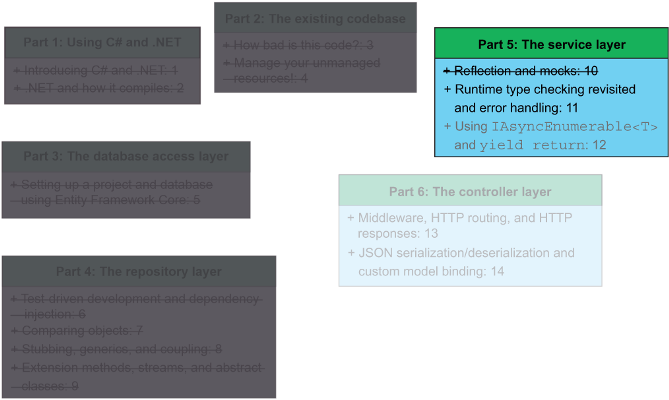After having implemented the database access layer in chapter 5 and the repository layer in chapters 6 through 9, we started to implement the BookingService in chapter 10. I also introduced you to using mocks in unit testing, and we discussed the repository/service pattern. In this chapter, we’ll use those concepts and draw on our knowledge of service layers to wrap up the BookingService implementation. Figure 11.1 shows where we are in the scheme of the book.
Figure 11.1 In this chapter we finish implementing the BookingService class. In the next chapter, we wrap up the Services layer by implementing the AirportService and FlightService classes.

While we finish implementing the BookingService, this chapter also discusses using the Assert.IsInstanceOfType test assertion to verify an object is of a certain type (or derived of a certain type), the discard (_) operator and its effect on Intermediate Language, and using multiple catch blocks in a try-catch code block.